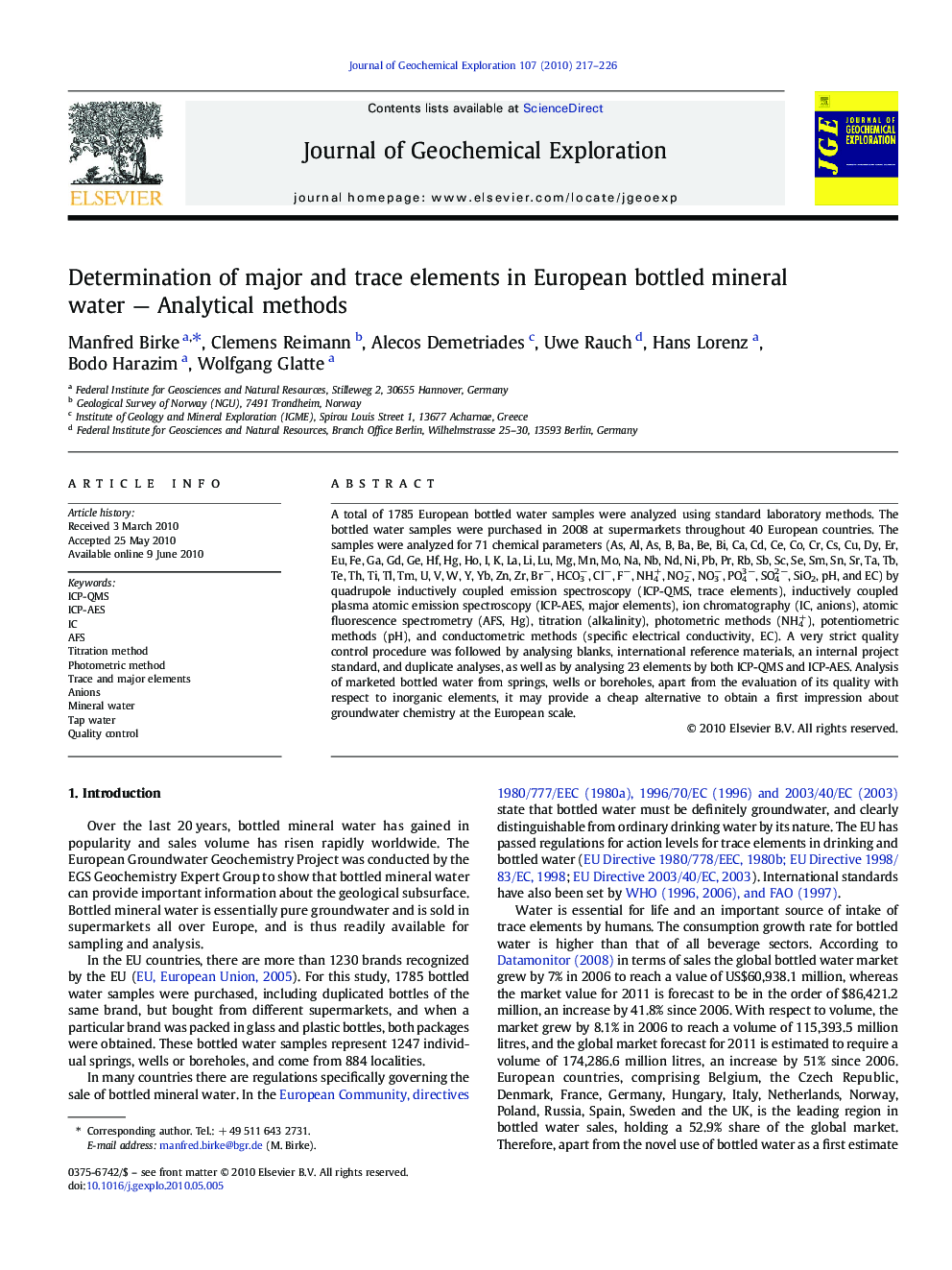| Article ID | Journal | Published Year | Pages | File Type |
|---|---|---|---|---|
| 4457903 | Journal of Geochemical Exploration | 2010 | 10 Pages |
A total of 1785 European bottled water samples were analyzed using standard laboratory methods. The bottled water samples were purchased in 2008 at supermarkets throughout 40 European countries. The samples were analyzed for 71 chemical parameters (As, Al, As, B, Ba, Be, Bi, Ca, Cd, Ce, Co, Cr, Cs, Cu, Dy, Er, Eu, Fe, Ga, Gd, Ge, Hf, Hg, Ho, I, K, La, Li, Lu, Mg, Mn, Mo, Na, Nb, Nd, Ni, Pb, Pr, Rb, Sb, Sc, Se, Sm, Sn, Sr, Ta, Tb, Te, Th, Ti, Tl, Tm, U, V, W, Y, Yb, Zn, Zr, Br−, HCO3−, Cl−, F−, NH4+, NO2−, NO3−, PO43−, SO42−, SiO2, pH, and EC) by quadrupole inductively coupled emission spectroscopy (ICP-QMS, trace elements), inductively coupled plasma atomic emission spectroscopy (ICP-AES, major elements), ion chromatography (IC, anions), atomic fluorescence spectrometry (AFS, Hg), titration (alkalinity), photometric methods (NH4+), potentiometric methods (pH), and conductometric methods (specific electrical conductivity, EC). A very strict quality control procedure was followed by analysing blanks, international reference materials, an internal project standard, and duplicate analyses, as well as by analysing 23 elements by both ICP-QMS and ICP-AES. Analysis of marketed bottled water from springs, wells or boreholes, apart from the evaluation of its quality with respect to inorganic elements, it may provide a cheap alternative to obtain a first impression about groundwater chemistry at the European scale.
